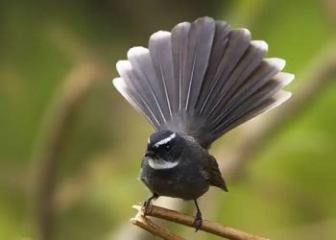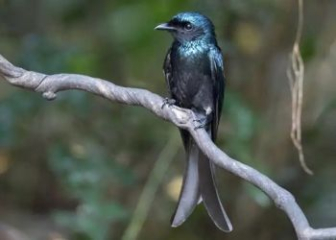Otus sunia - Asia's smallest owl
Blog | by
The little owl Otus sunia, one of the smallest owls in Asia, is a master of camouflage and is a hermit. It is not kept as a pet.
In the diverse world of owls, there is a species of owl with a very small size and many interesting behaviors that many people are interested in, which is the small owl Otus sunia, also known as the Oriental owl. This is one of the smallest owl species in Asia, with impressive feather colors and top camouflage behavior, very rarely seen in nature.
In today's article, let's explore in detail the nicebirds , habits and reasons why the small owl Otus sunia is not recommended for keeping as a pet.
Information about the little owl :
|
Common name |
Little Owl Otus sunia, Oriental Scops Owl |
|
Common English Name |
Oriental Scops Owl |
|
Class |
Aves - Birds |
|
Set |
Strigiformes - Order of Owls |
|
Surname |
Strigidae - Owl family |
|
Species |
Sun |
|
Source |
Asia |
|
Size |
Length: 17 - 21 cm Weight: 75 - 95 grams |
Origin & distribution of the little owl
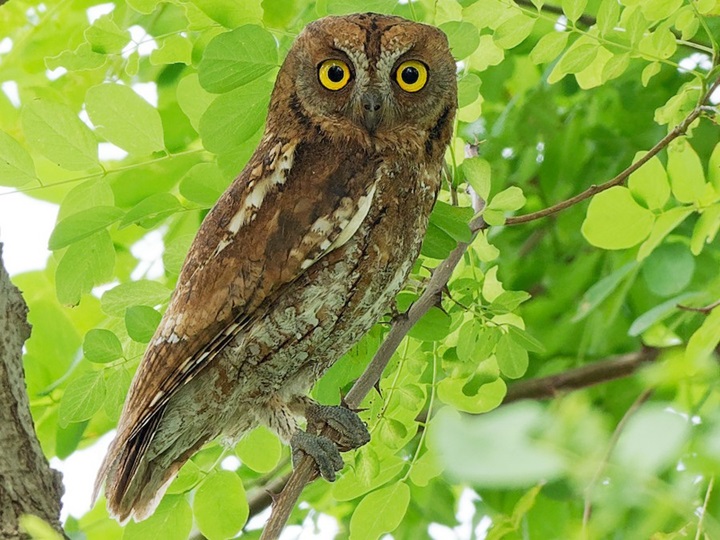
Learn about the origin and range of the little owl.
The Oriental Scops Owl (Otus sunia) is a species of owl in the family Strigidae, first scientifically described in 1836 by naturalist Brian Houghton Hodgson.
This is a native bird of Asia, with a wide distribution range from temperate to tropical regions, typically in the following areas:
- South Asia: India, Bhutan, Sri Lanka
- Southeast Asia: Myanmar, Thailand, Vietnam, Laos, Cambodia
- China, Korea, Japan,...
In the wild, the little owl Otus sunia lives mainly in deciduous broadleaf forests, mixed forests, secondary forests or even urban parks. This bird is not particularly picky about altitude, it can vary greatly from low to 2300m above sea level.
Identification features of the little owl
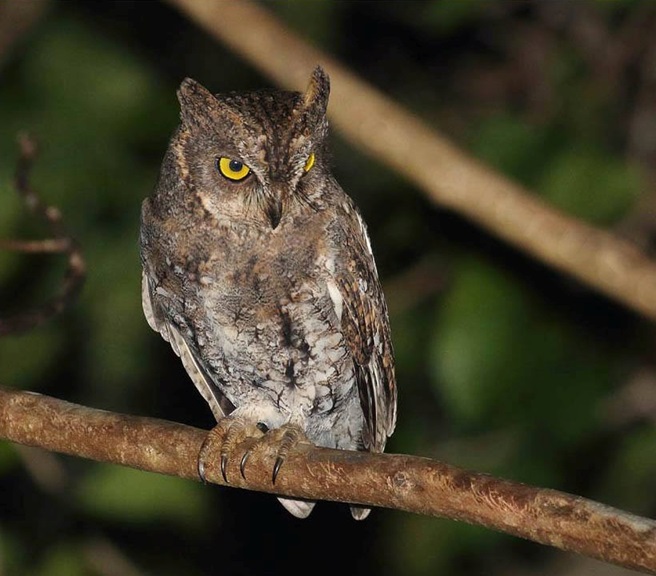
The small appearance of the little screech owl Otus sunia.
As the name suggests, the little owl Otus sunia is a small owl species but has a very special appearance thanks to its characteristic upright “ear tufts”. Let’s take a closer look at the appearance of this bird.
Size :
- Length: 17 - 21 cm
- Weight: 75 - 95 grams
- Wingspan: 50 - 60 cm
- Appearance: Compact, large head, short neck.
- Standing posture: When standing still, stand straight, press your body against the tree branch, ears erect, eyes half closed.
Head & face :
- Round head, with "fake ears" thanks to two tufts of hair standing up like horns
- Round, big, bright yellow eyes, very sharp
- Flat, slightly concave
- The beak is short, slightly curved, and is usually grey or light black in colour.
Body - wings - back :
- Long wingspan, slightly pointed, with many stripes and black spots
- On the shoulder has a characteristic white fur strip
- The back and tail have dark horizontal stripes that help the bird camouflage well.
- Short, square tail
Feet & nails :
- Short legs, covered with fur up to the nails
- The foot has 3 front toes and 1 back toe.
- Black sharp claws
Fur color :
- Rufous morph: The entire body is reddish brown, cinnamon brown, with thin, broken black stripes or white spots scattered across the wings and back.
- Grey morph: Ash grey or brown grey fur, with many black streaks and white stripes
Owl's Behavior & Temperament
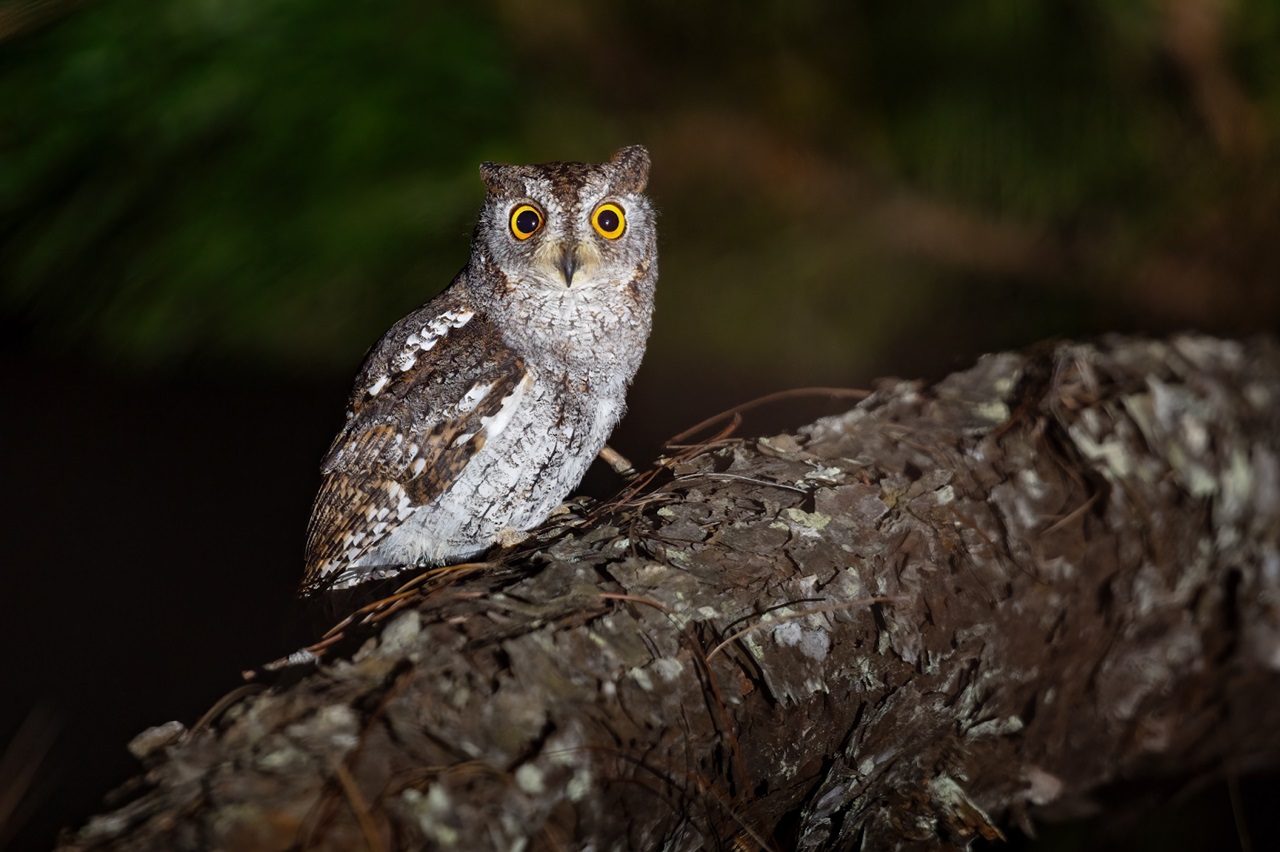
A screech owl Otus sunia foraging at night.
The little owl Otus sunia is a nocturnal owl with many interesting habits and behaviors. Let's learn more about it below.
Night activities
Otus sunia is mainly active at night - Nocturnal, they will move a lot, hunt prey and make loud calls. During the day they will mostly rest, stand still in the trees and rarely move.
Lives alone or in pairs
Little Owls Otus sunia live singly or in pairs, never in flocks. They are also highly territorial, loyal to their territory especially during the breeding season.
Usually in some temperate regions such as Japan or China, this bird species will migrate to Southeast Asia when winter comes to avoid the cold.
Not singing but calling like an owl
Although also belonging to the bird order, the little owl Otus sunia does not sing like many other birds, but instead it has a characteristic, "owl" call, which is "tuk-tok-tok", "tok-tok-tok",...
Each bird will have a different call in tone, both to distinguish territory and to attract the attention of a mate.
Is a bird of prey
The little owl Otus sunia is a bird of prey. They always hover and stalk their prey from above then swoop down to catch it in the blink of an eye.
Their main food is insects, small animals such as lizards, frogs, mice and even young birds of other species.
They will use their claws to hold their prey tightly and then use their beaks to slowly peck or tear it into small pieces to swallow.
Nesting and breeding
Normally, the Eastern Scops Otus sunia will breed from February to May, depending on the living area. They do not dig their own nests but always take advantage of rotten tree holes or old wood holes, then cover them with a few dry grass blades.
A female bird will lay 2-5 white eggs, then they incubate the eggs for about 3 weeks until the chicks hatch. Both the father and mother birds take care of their chicks together and are very close.
Super camouflage
Thanks to its small size and special feather color, the little owl Otus sunia has an extremely interesting self-defense and camouflage behavior. When discovered, it will stand still, press itself against a tree branch, raise its ears, and close its eyes to look like it is "playing dead".
However, if forced or approached too closely, Otus sunia will ruffle its feathers, make loud noises, and even raise its claws to pretend to attack.
Why are small owls NOT recommended as pets?
Currently, the little owl Otus sunia is not recommended for keeping as a pet because of legal, ecological and ethical issues. Let's find out more details below.
Violation of the Law on Protection
The little owl Otus sunia is a native wild bird and according to the 2017 Vietnam Forestry Law, the illegal capture, breeding, transporting, and trading of wild animals is a violation of the law. Therefore, this bird is also protected under the list of "Wild animals requiring supervision and control: therefore, the act of buying, selling, keeping, and breeding Otus sunia without a license is illegal.
Not adapted to captivity
Otus sunia is a nocturnal bird, reclusive and sensitive to noise, light and humans, so they are not completely suitable for artificial captivity in a confined space.
Besides, the small owl also requires special care conditions, is difficult to domesticate and is not very "friendly" with humans, so it is not suitable as a pet like many other ornamental birds.
Impact on wild populations
In addition, hunting the little owl Otus sunia will reduce the number of this bird in the wild, causing ecological imbalance, so catching and raising Otus sunia will destroy the ecosystem.
Interesting facts about the little owl
Below are some interesting facts about the little owl Otus sunia, please learn more, we guarantee everyone will be surprised.
- In addition to the two colors of ash gray and reddish brown, there will be some small owls with a mixture of these two colors that looks extremely artistic.
- Although some people believe that owls symbolize bad luck, Otus sunia is actually considered a symbol of luck, intelligence and wisdom - especially in India.
- Otus sunia is known as a “secret traveler” because they often migrate silently at night and people rarely discover them. Even in nature, people can often hear the “tok-tok-tok” call of this bird but it is very rare to see them with the naked eye.
- Otus sunia's eyes do not move left and right like humans, they can only rotate their necks to look around.
-
It is a silent hunter thanks to its specially structured plumage, minimizing noise emissions when flying.
Pictures of beautiful small cats
Please enjoy the unique, authentic images of the little Otus Sunia owls shared below to better visualize this special owl species.
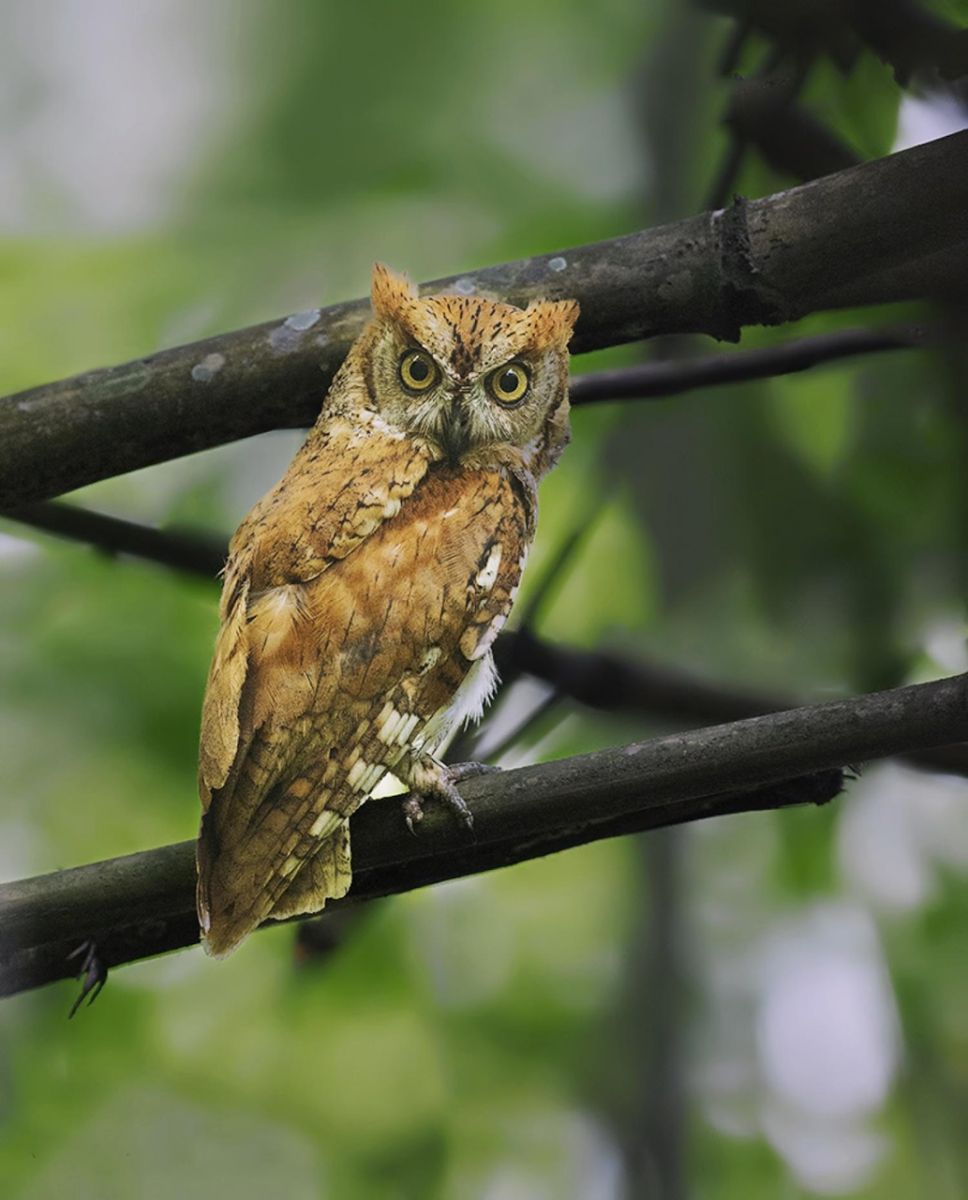
A small owl with a rather "fierce" looking face.

A little owl was standing close to the tree trunk.
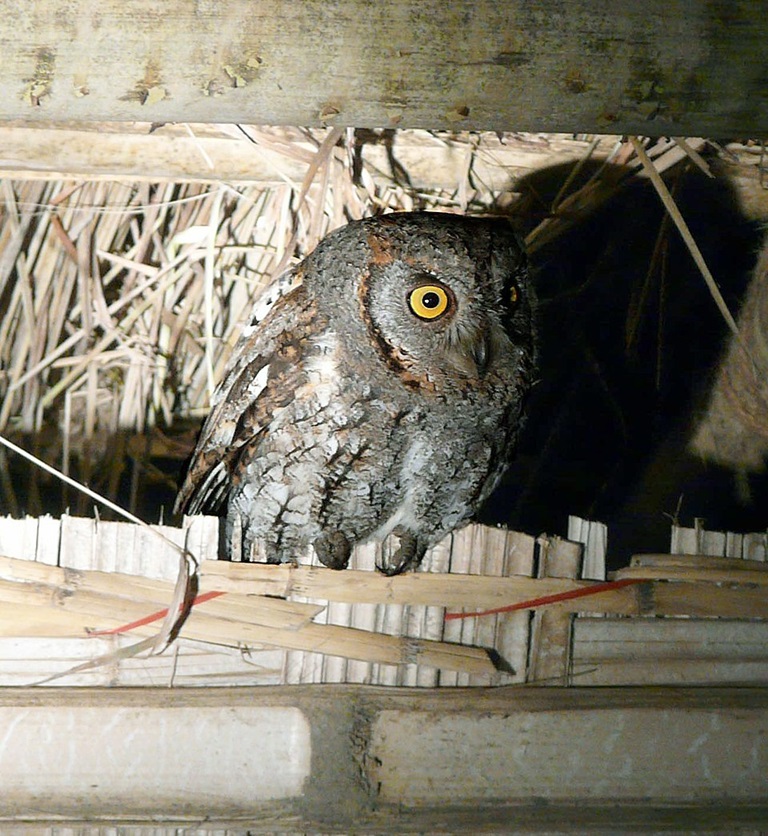
The big, bright eyes of the little owl Otus sunia.
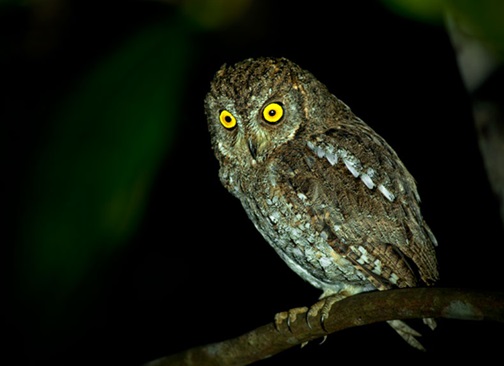
The bright eyes of a small owl Otus sunia.
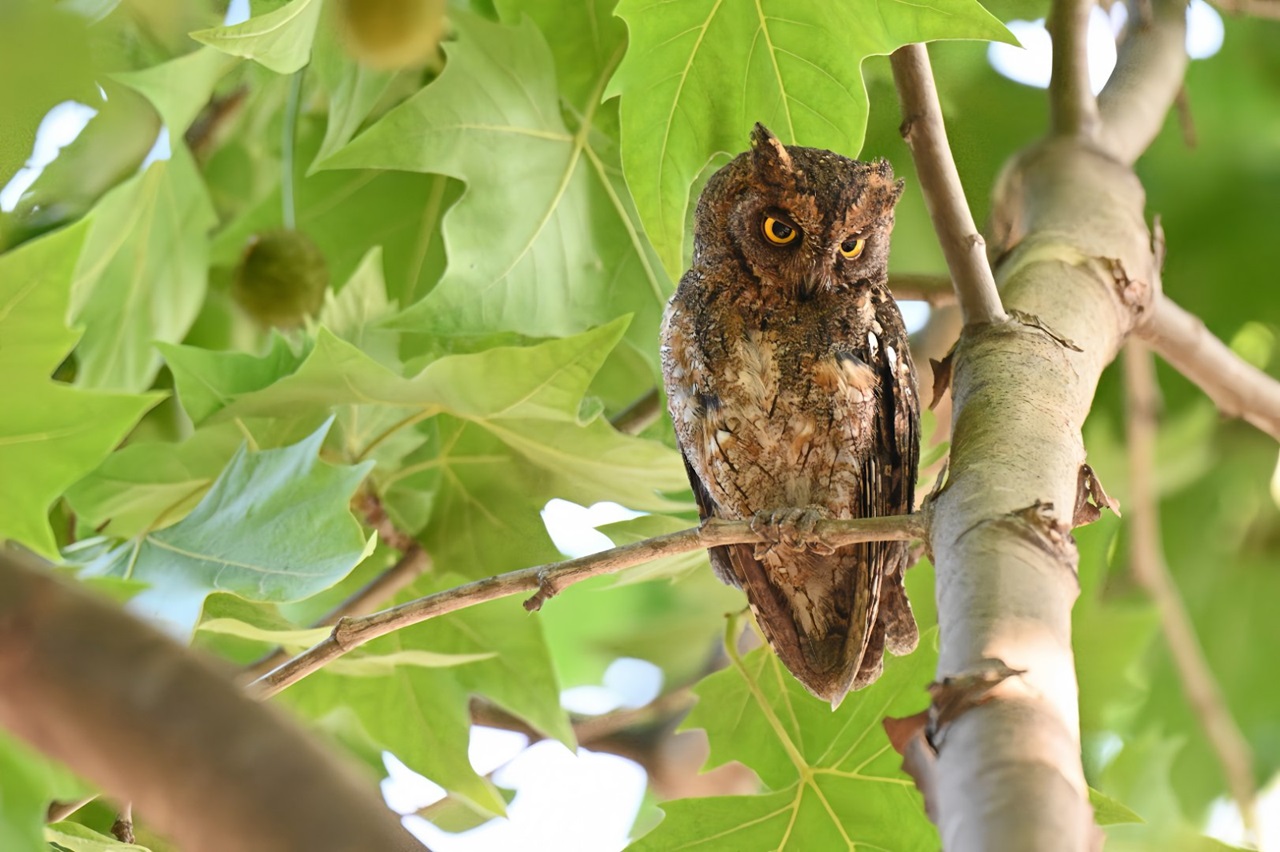
Image of a screech owl Otus sunia perched on a high tree branch.
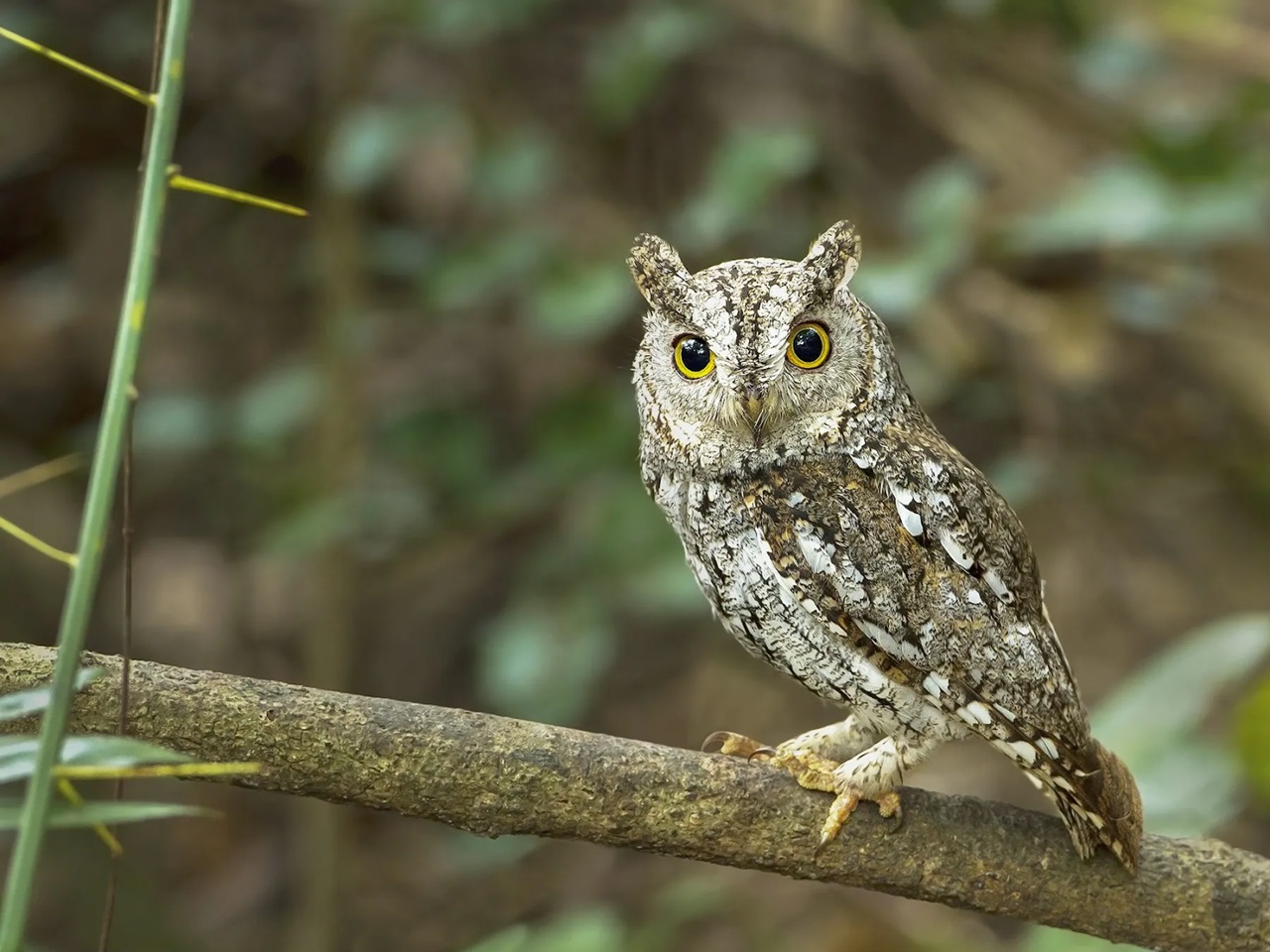
A small screech owl Otus sunia has feathers that look like tree bark.
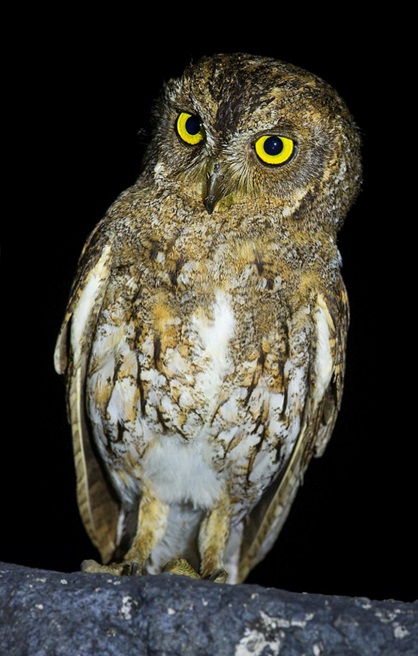
Close-up of the unique plumage of a small owl.
Although they do not have colorful feathers or cheerful songs like many other pet birds, the small owl Otus sunia still receives the attention and love of wild bird lovers because of its special appearance and characteristic behavior.
Hopefully, through the article that nicebirds.net shares above, it will help you understand more about this lovely little owl. Don't forget to visit our Blog section to discover more interesting wild and ornamental birds.
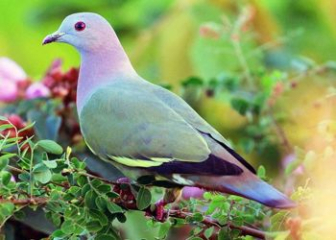




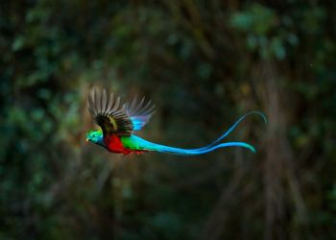


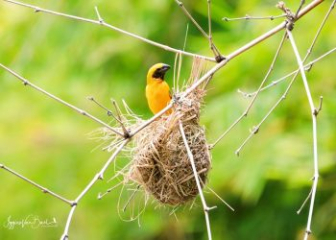
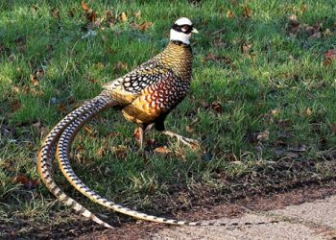

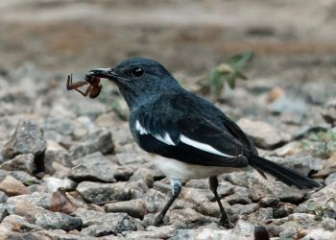


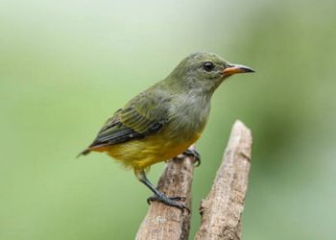
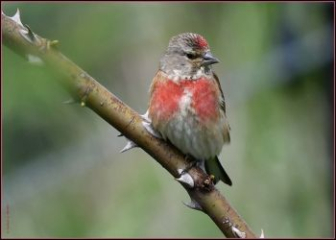
_350x250.jpg)
